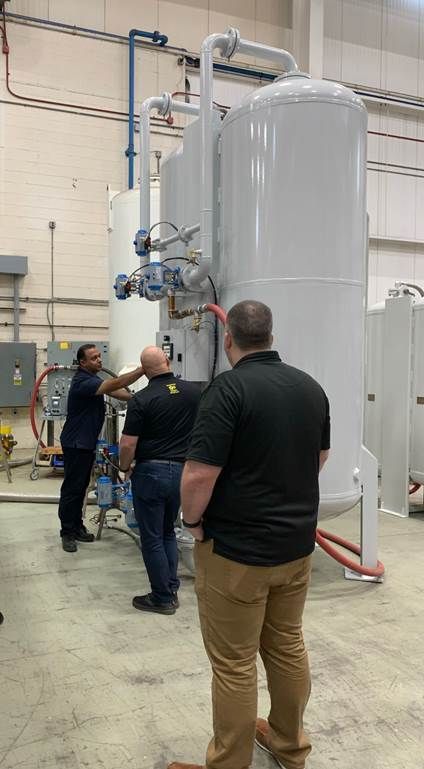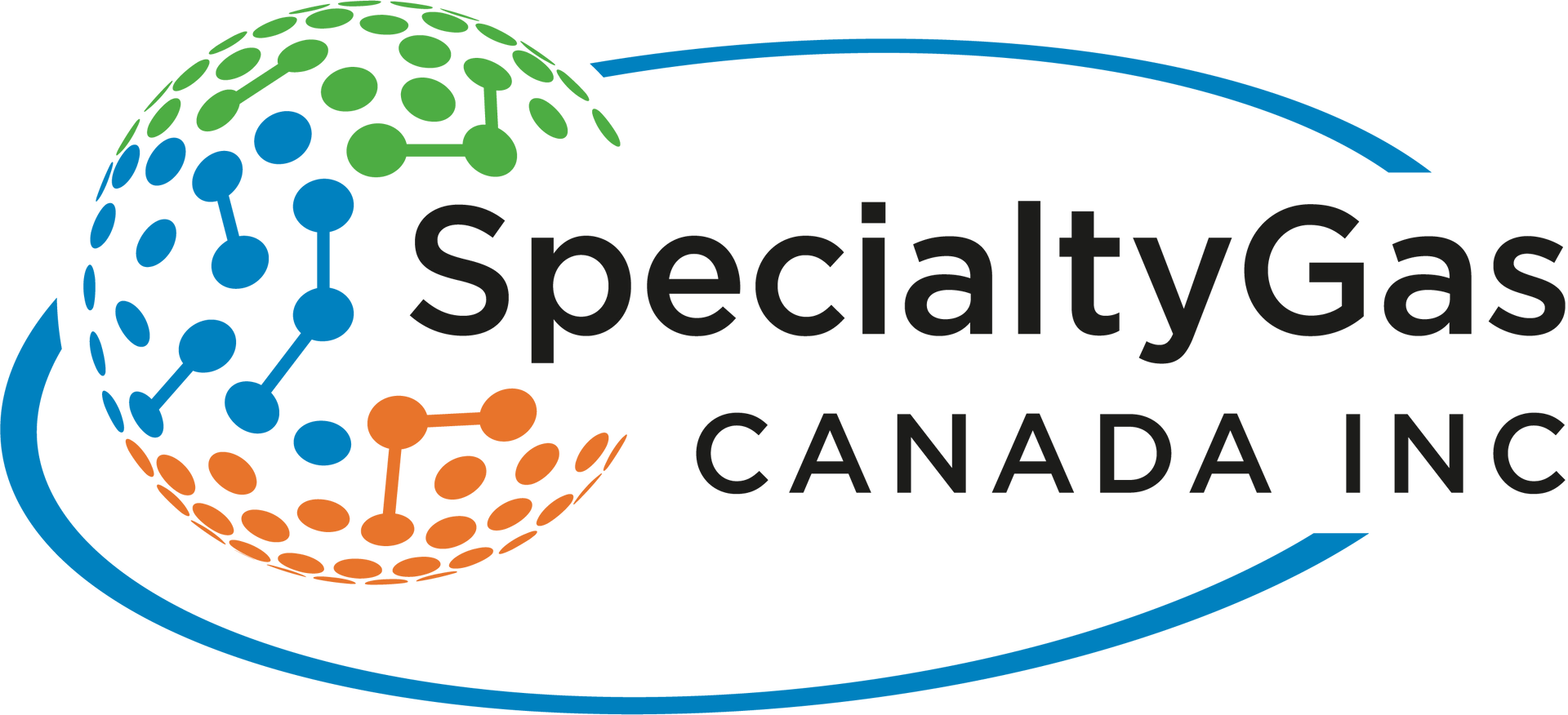The Problem with Traditional Gas Supply
Industrial facilities that rely on delivered nitrogen and oxygen gas often experience high costs, energy waste, and environmental inefficiencies. Traditional methods, such as high-pressure gas cylinders and liquid gas storage, introduce significant losses due to evaporation, pressure retention issues, and transport inefficiencies. Additionally, the transportation of nitrogen and oxygen gas adds a substantial carbon footprint, as gas deliveries require trucks running on fossil fuels.
Gas that is delivered in high-pressure cylinders is inefficient due to the nature of its storage. A portion of gas that is delivered in high-pressure cylinders remains trapped inside due to pressure loss. Maintaining cryogenic temperatures also requires a continuous venting process. Thus, liquid gas storage systems experience constant evaporation losses of 15-20%.
By the time the gas even reaches the facility, up to 15% of the originally produced gas is wasted. Once installed, a portion of gas that is delivered in high-pressure cylinders remains trapped inside due to pressure loss.
An On-Site Gas Generator is the More Efficient Alternative
On-site nitrogen and oxygen generators eliminate these inefficiencies by producing gas on demand, ensuring that facilities generate exactly the amount needed without unnecessary waste.
Instead of relying on expensive delivered gas, on-site eco-friendly gas generators extract nitrogen or oxygen from ambient air using Pressure Swing Adsorption (PSA) technology. Facilities are thus able to produce gas on demand, ensuring that they generate exactly the amount needed. This method requires significantly less energy compared to the liquefaction and transportation processes used by traditional gas suppliers.
Modern PSA gas generators allow businesses to control their own supply, eliminating risks associated with fluctuating gas prices, supply chain delays, and environmental inefficiencies. Additionally, modular systems such as the iFlow Prime 7000 provide scalable gas production, ensuring maximum energy efficiency with minimal operating costs.

Cost and Energy Savings with On-Site Gas Generation
| Feature | On-Site Gas Generation | Delivered Gas (Cylinders/Liquid) |
|---|---|---|
| Cost per Cubic Meter | $0.06 | $0.40 - $0.80+ |
| Energy Consumption | Low (produced on demand) | High (liquefaction + transport) |
| Waste | Nil | Up to 30% lost in evaporation and purging |
| CO₂ Emissions | Nil | High (due to transport and processing) |
| Supply Flexibility | Adjustable to demand | Fixed, requires regular deliveries |
Eliminating Energy Waste with PSA Technology
Traditional liquid gas systems require constant refrigeration to prevent evaporation. This means that even when gas is not in use, energy is continuously consumed. By contrast, an on-site PSA nitrogen/oxygen gas generator operates on a demand-based supply, meaning it only runs when gas is needed.
Modern PSA generators also feature a standby mode, which shuts down the system automatically during idle periods, preventing unnecessary energy consumption. This results in significantly lower electricity usage compared to traditional storage-based gas supply methods.
With these advancements, companies can drastically reduce their operational energy costs, ensuring a sustainable and cost-effective gas supply.
Sustainability Benefits of On-Site Eco-friendly Gas Generation
Beyond energy savings and energy efficiency, on-site nitrogen and oxygen generation helps companies meet sustainability goals by reducing their carbon footprint.
By eliminating gas deliveries that require trucks that run on fossil fuel, businesses remove a major source of CO₂ emissions, cutting their reliance on fossil fuel-based logistics. Additionally, on-site gas production removes the need for energy-intensive liquefaction and vaporization processes, further reducing overall environmental impact.
With optimized low-pressure-drop filtration systems, energy efficiency is maximized at every stage of the process. Specialty Gas Canada’s nitrogen and oxygen generation systems are designed to minimize energy waste, ensuring that facilities maintain low operating costs and high sustainability standards.
Industry Standards & Compliance
All Specialty Gas Canada’s nitrogen and oxygen gas generation systems comply with international safety and energy efficiency regulations, ensuring reliability and performance across multiple industries.
Our systems meet or exceed the following standards:
- CEC (California Energy Commission)
- CSA (Canadian Standards Association)
- European Pharmacopoeia Compliance
- US FDA Regulations
- CRN (Canadian Registration Number) Certification
Specialty Gas Canada is different from many competitors because we meet Canadian-specific regulatory standards also in addition to the global standards. We ensure full compliance with CRN and CSA certifications, which makes our systems a trusted option for energy-efficient nitrogen and oxygen generation.
How Specialty Gas Canada Optimizes Energy Efficiency for Clients
At Specialty Gas, we specialize in custom oxygen and nitrogen gas generation solutions tailored to each client’s energy needs, purity requirements, and production demands.

Our team begins with a demand analysis, identifying opportunities to reduce energy consumption and operational costs in your facility. By selecting the right pressure, filtration, and compressor technologies, we design systems that deliver the highest level of energy efficiency for your needs.
In this process, we integrate high-efficiency compressors and low-pressure-drop filters. This further reduces pressure losses and optimises system performance. Our modular technology ensures that facilities only produce the gas they need, preventing unnecessary energy waste and overproduction.
Why More Companies Are Switching to On-Site Gas Generation
As industries move toward energy efficiency and cost reduction, on-site eco-friendly gas generators are becoming the preferred choice over traditional bottled and liquid gas supplies.
Businesses are quickly seeing the benefits of self-sufficient gas production. It offers significant cost savings, lower energy usage, and reduced carbon emissions. The benefits of switching include:
- Lower operational costs with a return on investment (ROI) in as little as six months
- No storage losses or evaporation waste
- Greater control over supply and pricing stability
- Eliminate CO₂ emissions from transportation and liquefaction
- Compliance with the highest industry safety and energy efficiency standards
With Specialty Gas Canada's cutting-edge technology and industry expertise, businesses can transition to a more sustainable and cost-effective gas supply model to achieve long-term energy savings and operational flexibility.
Let’s Build the Right Solution for You
Ready to reduce your costs, improve your safety, and take control of your gas supply?
Contact Specialty Gas today for a free consultation and system evaluation.





